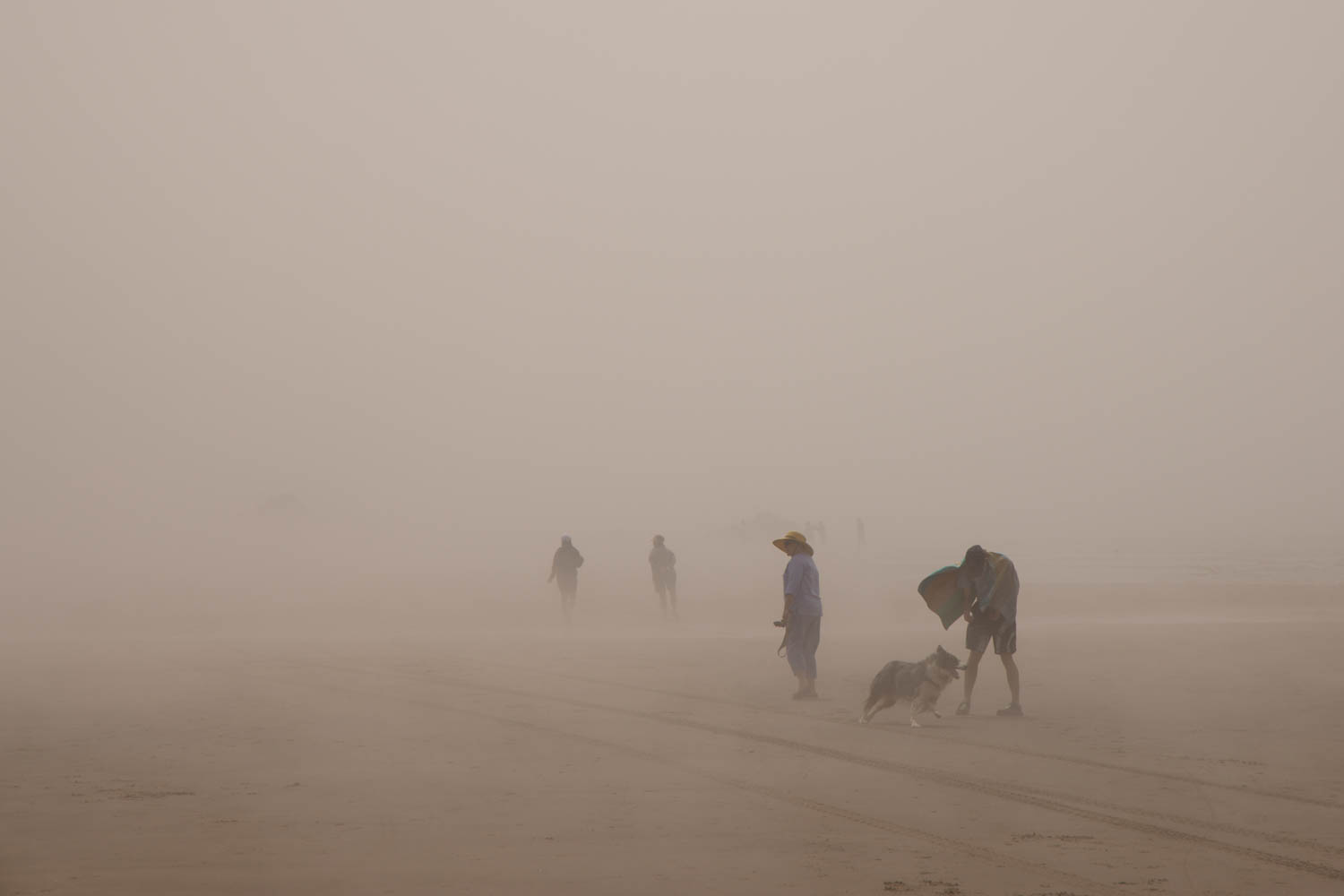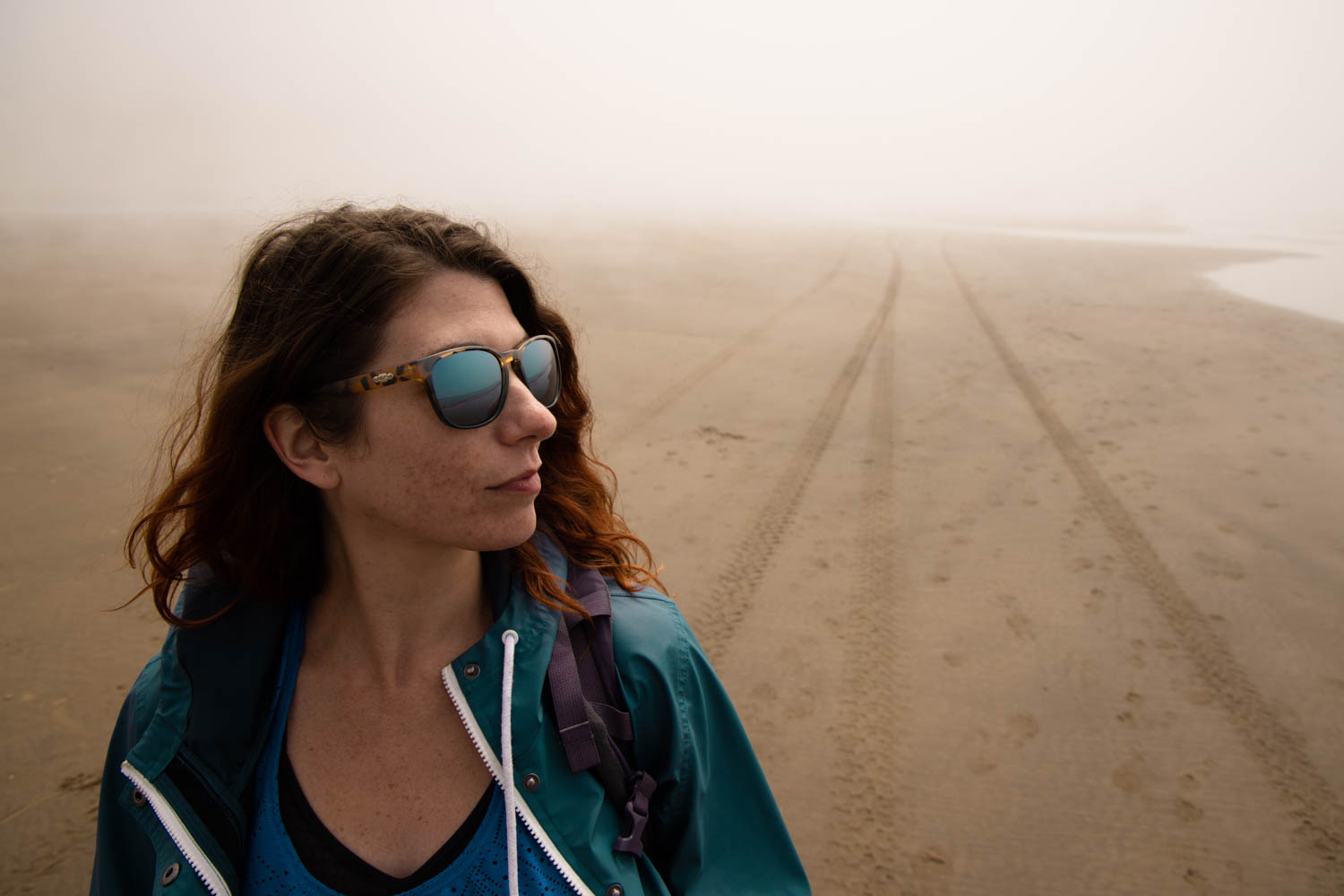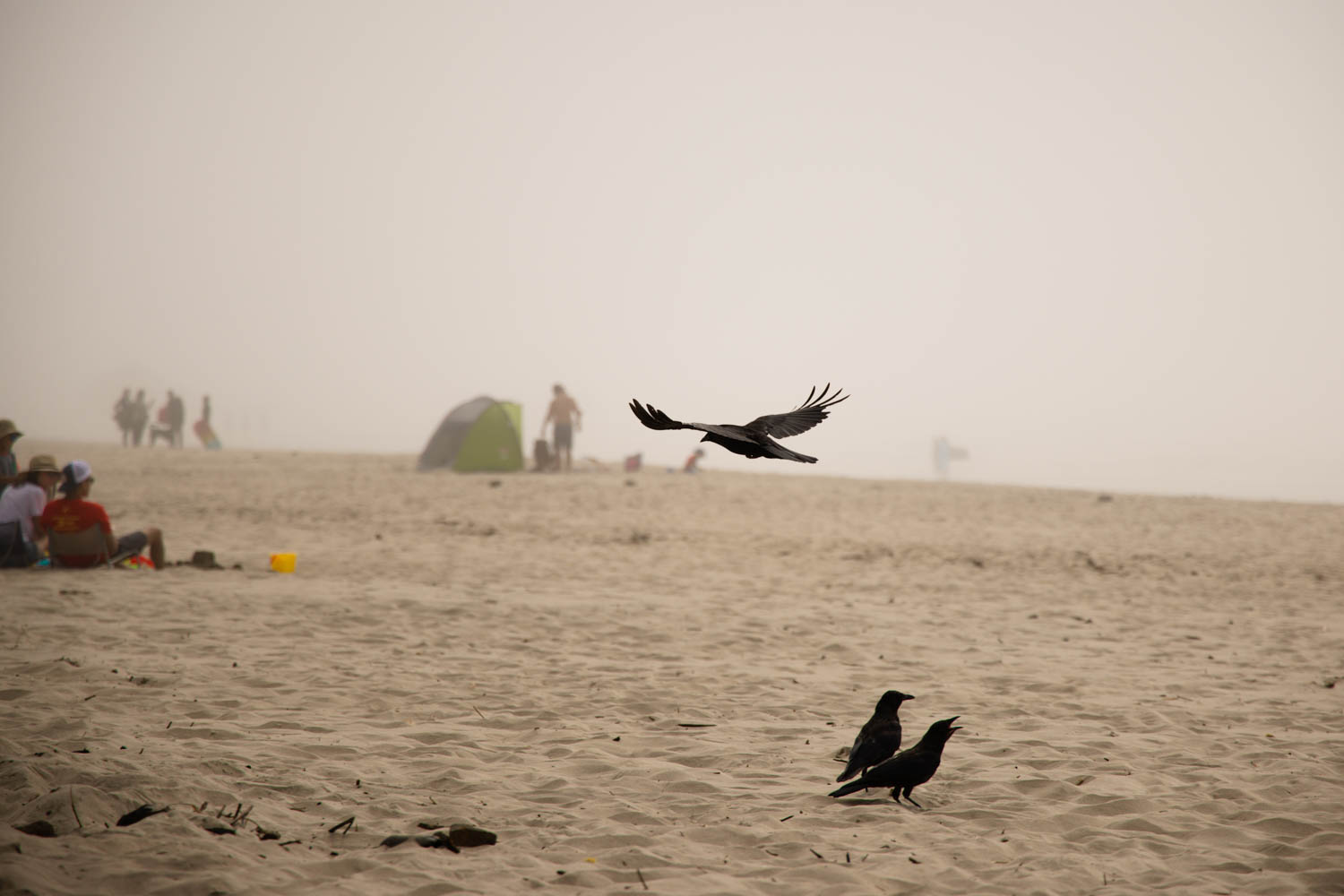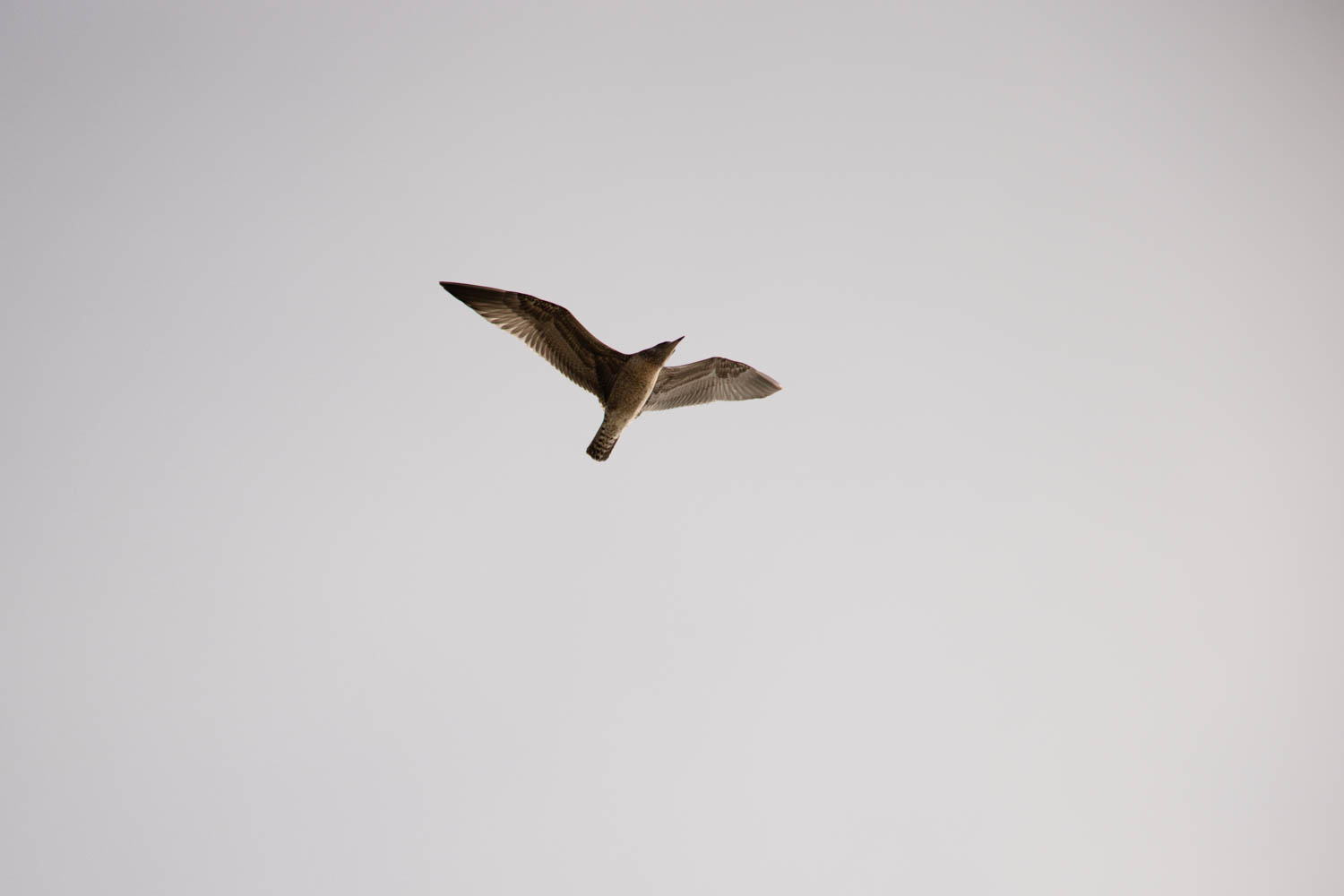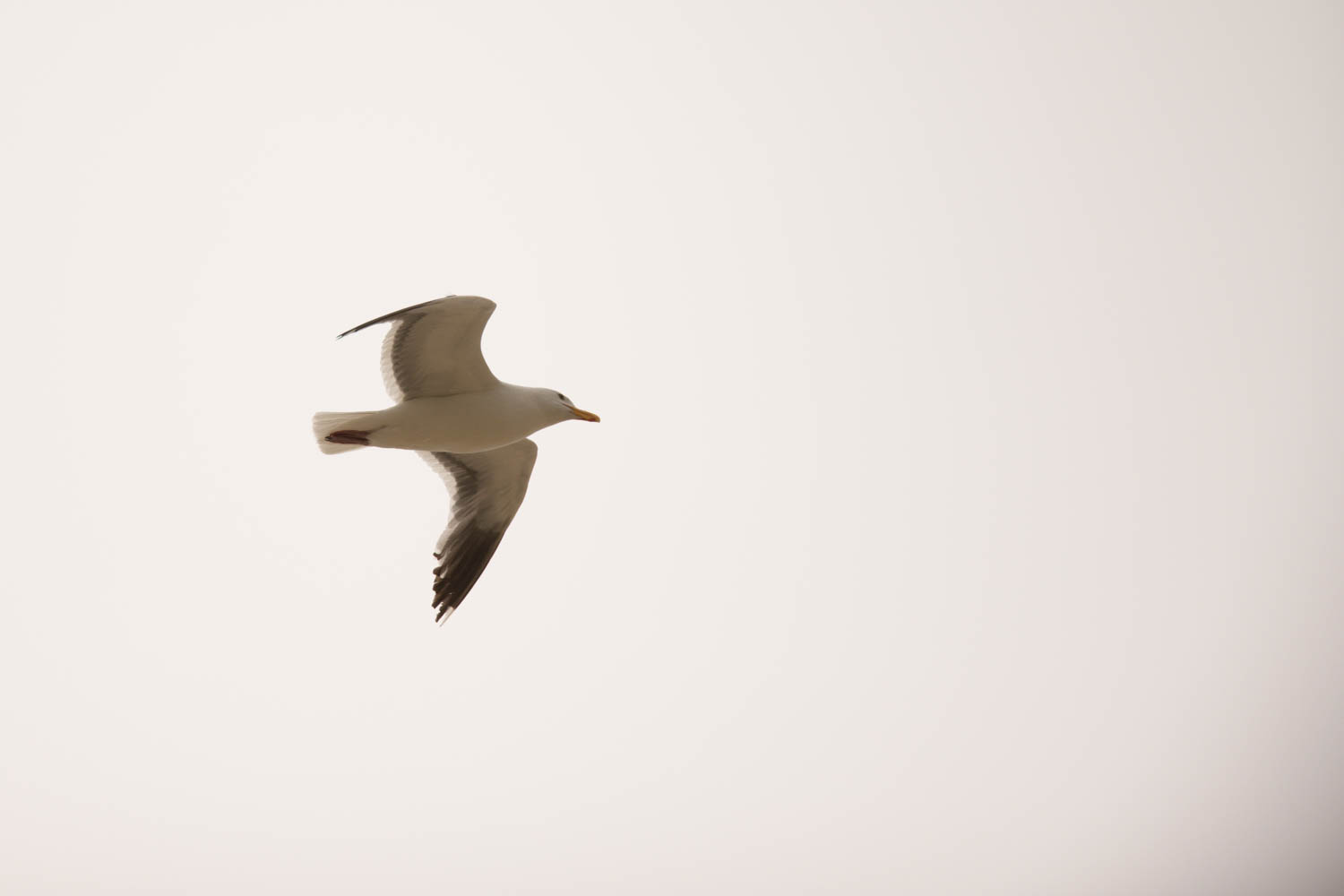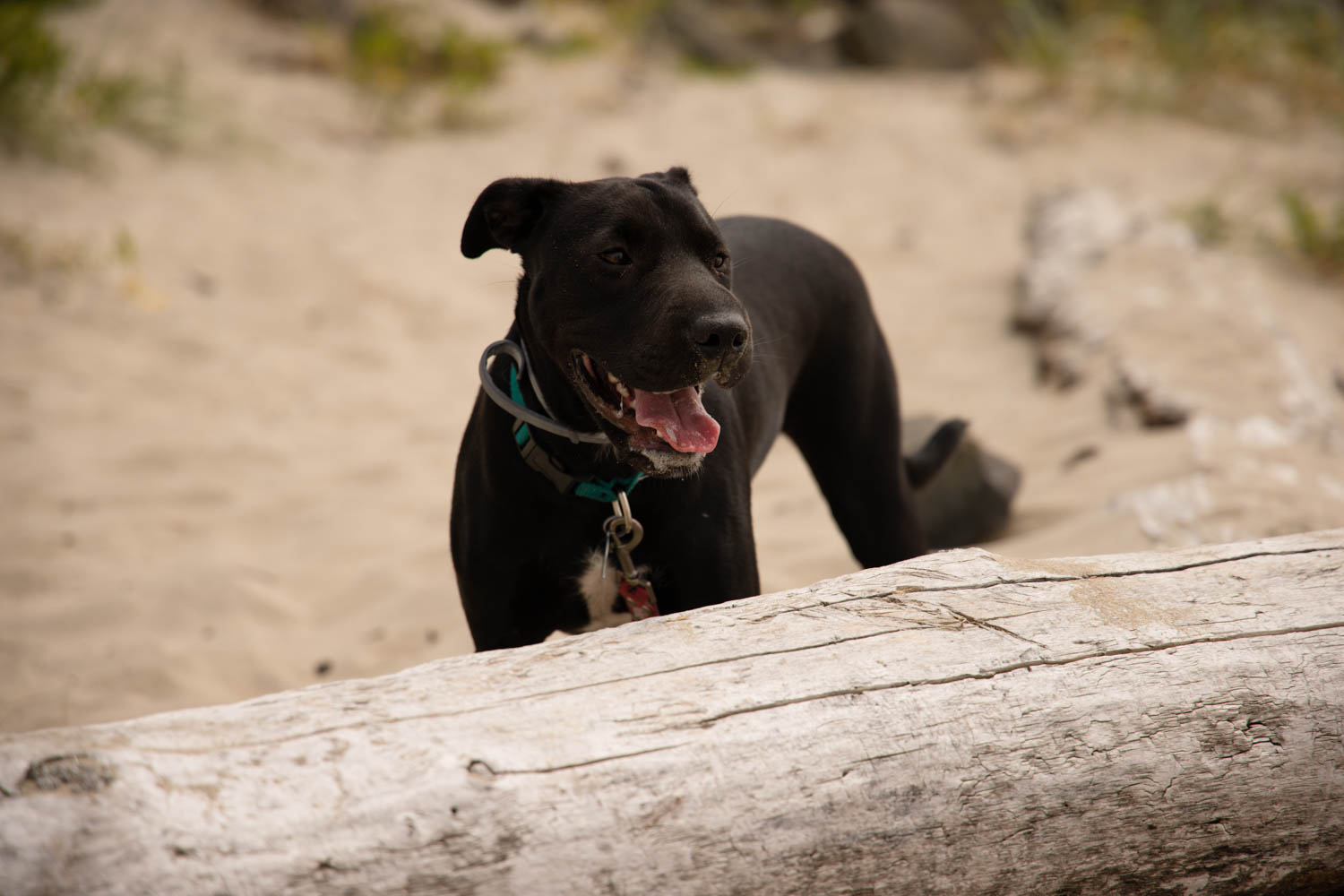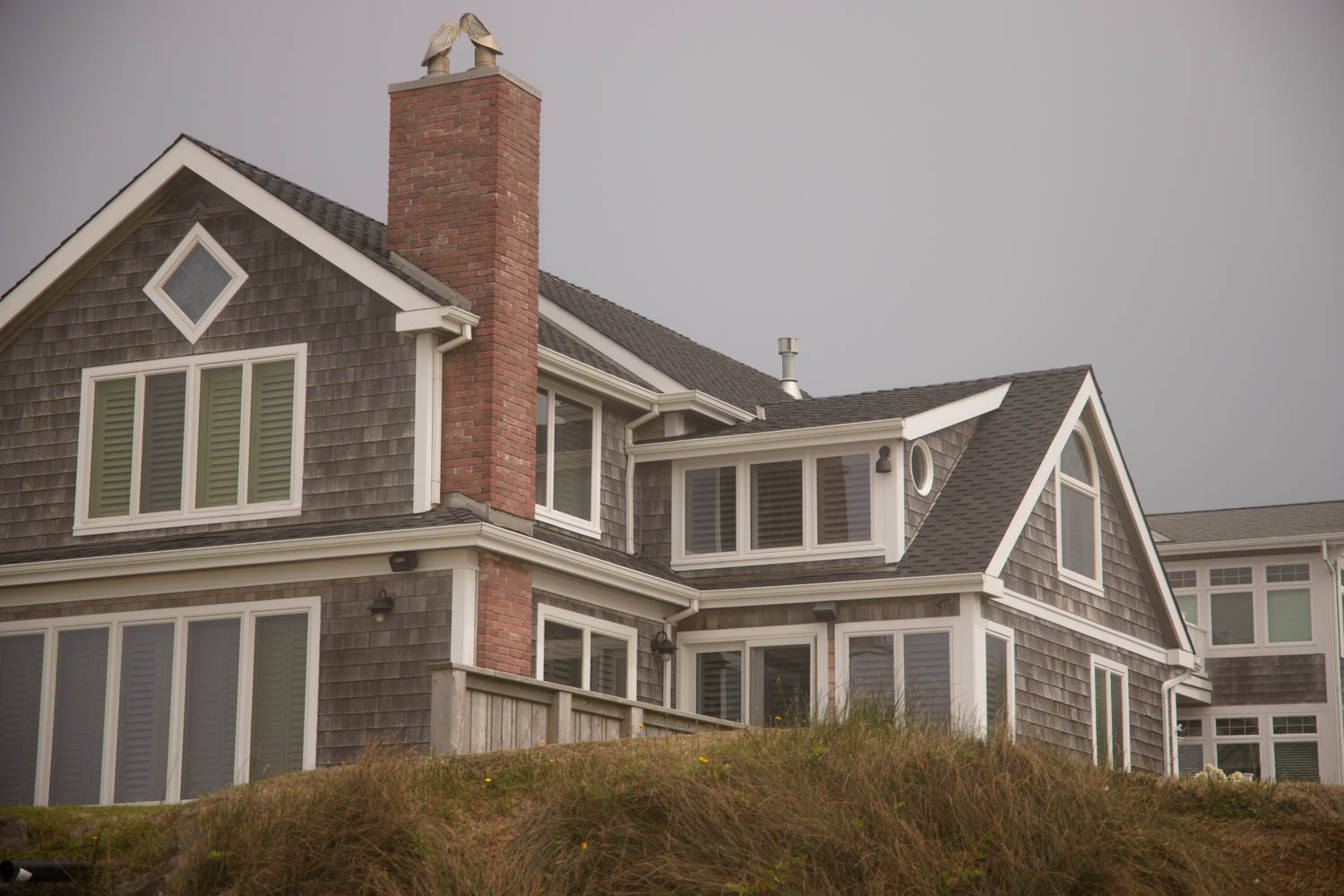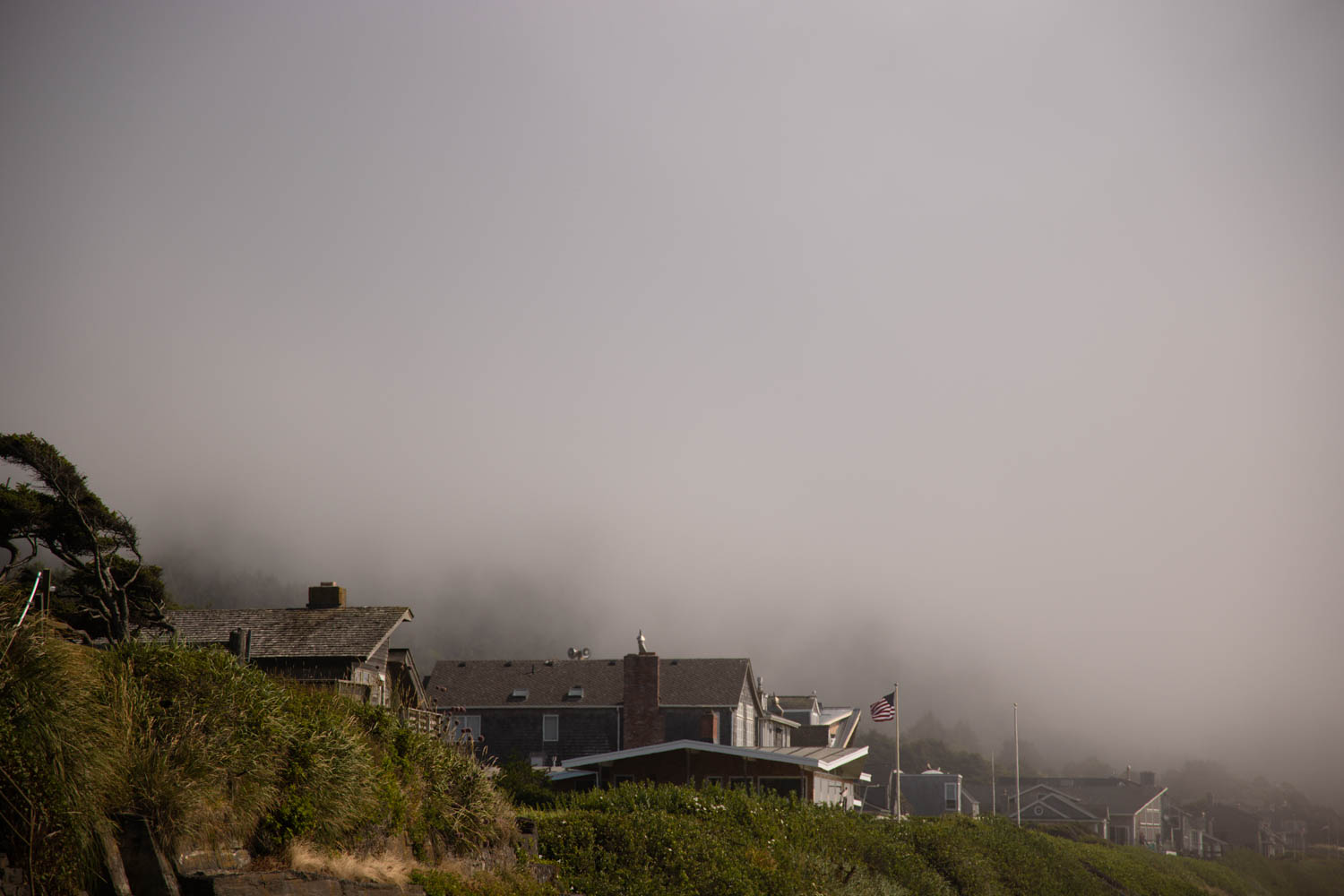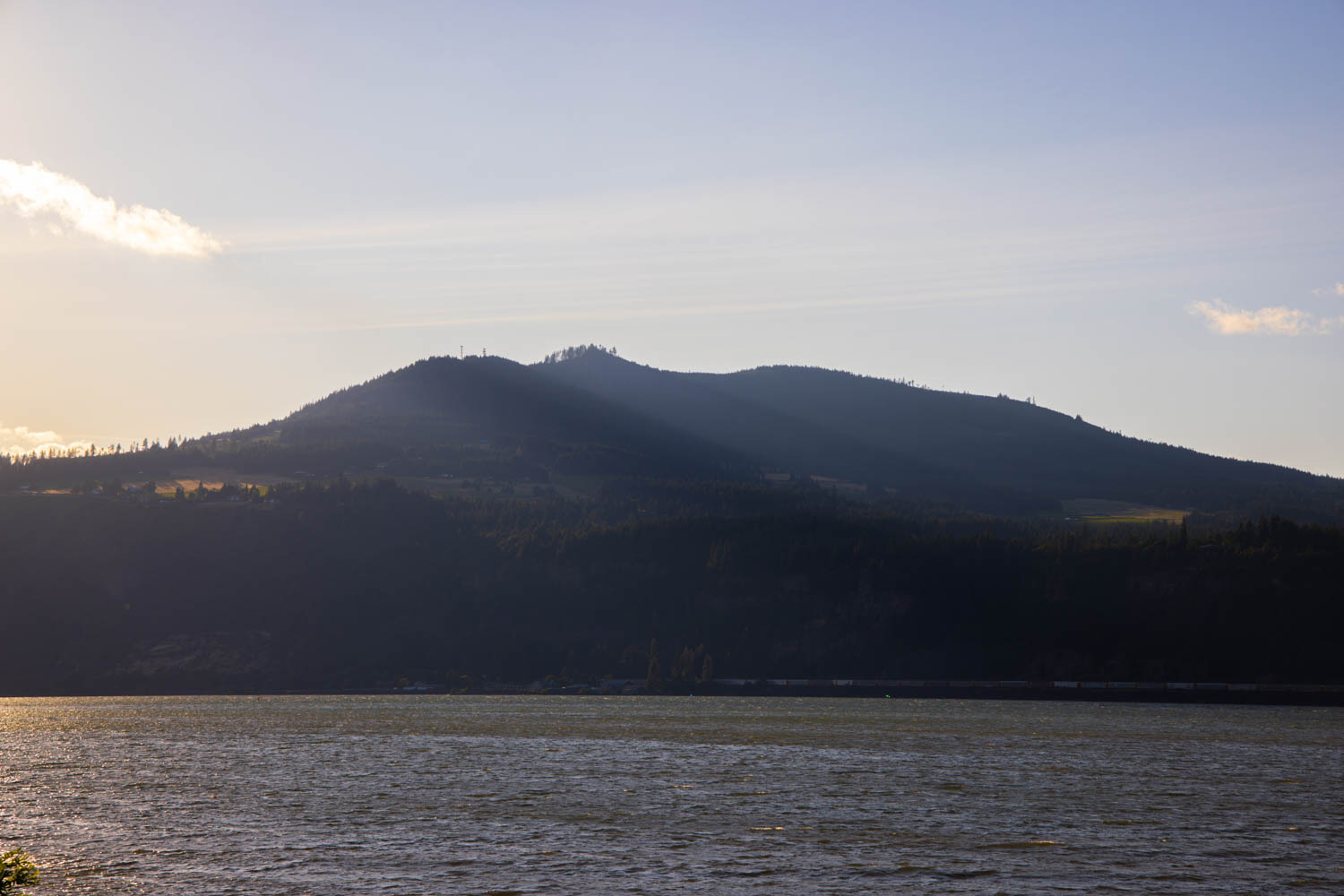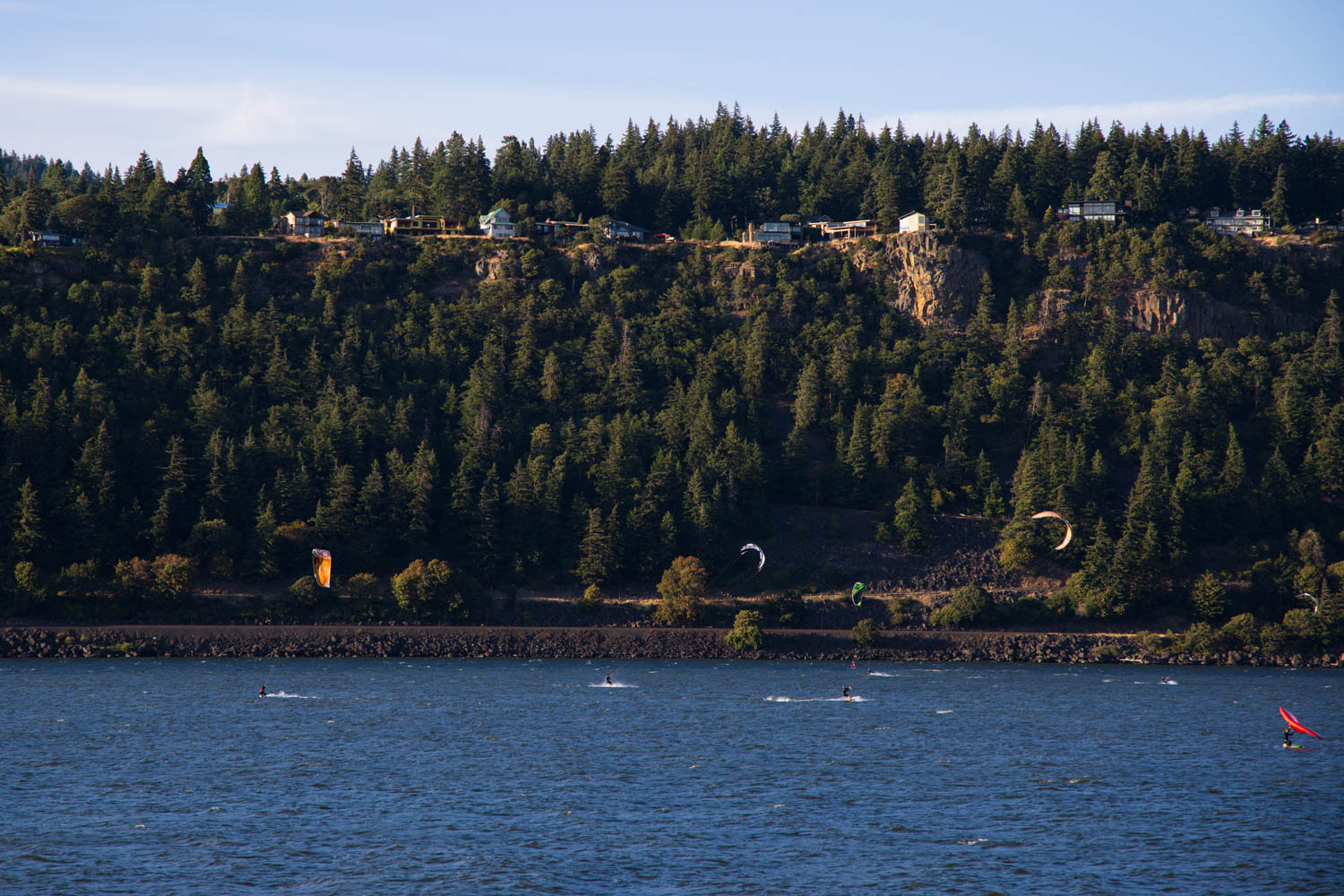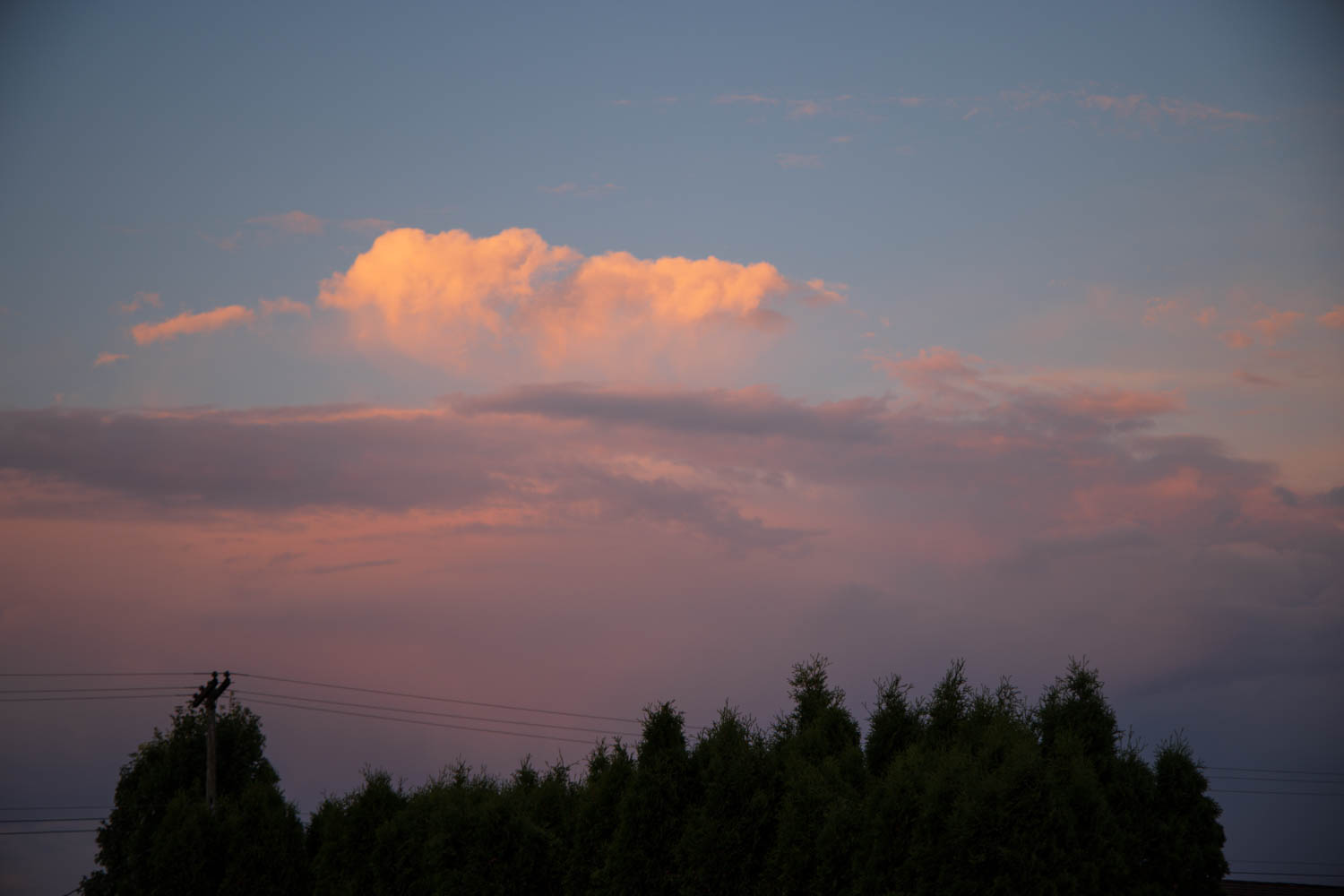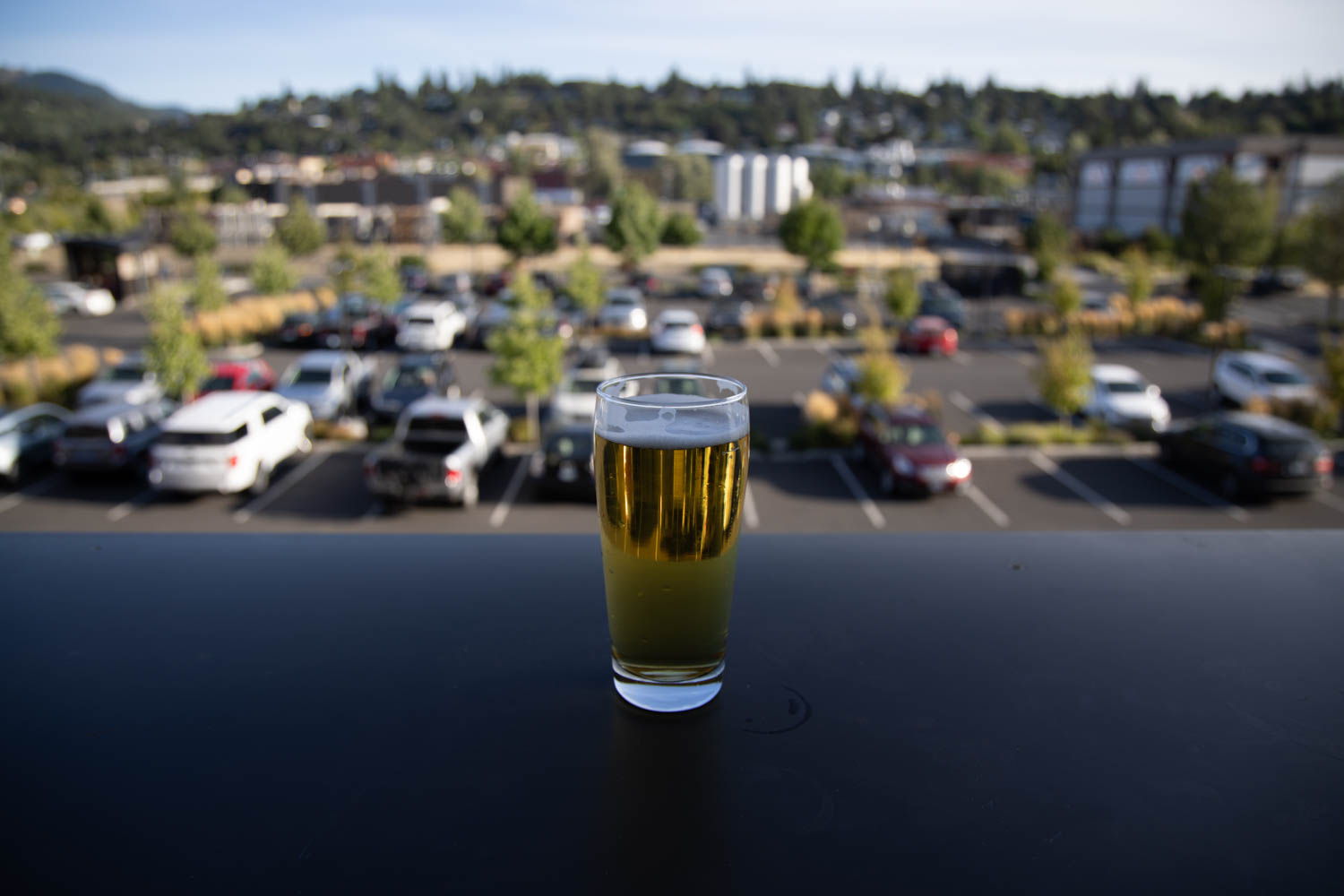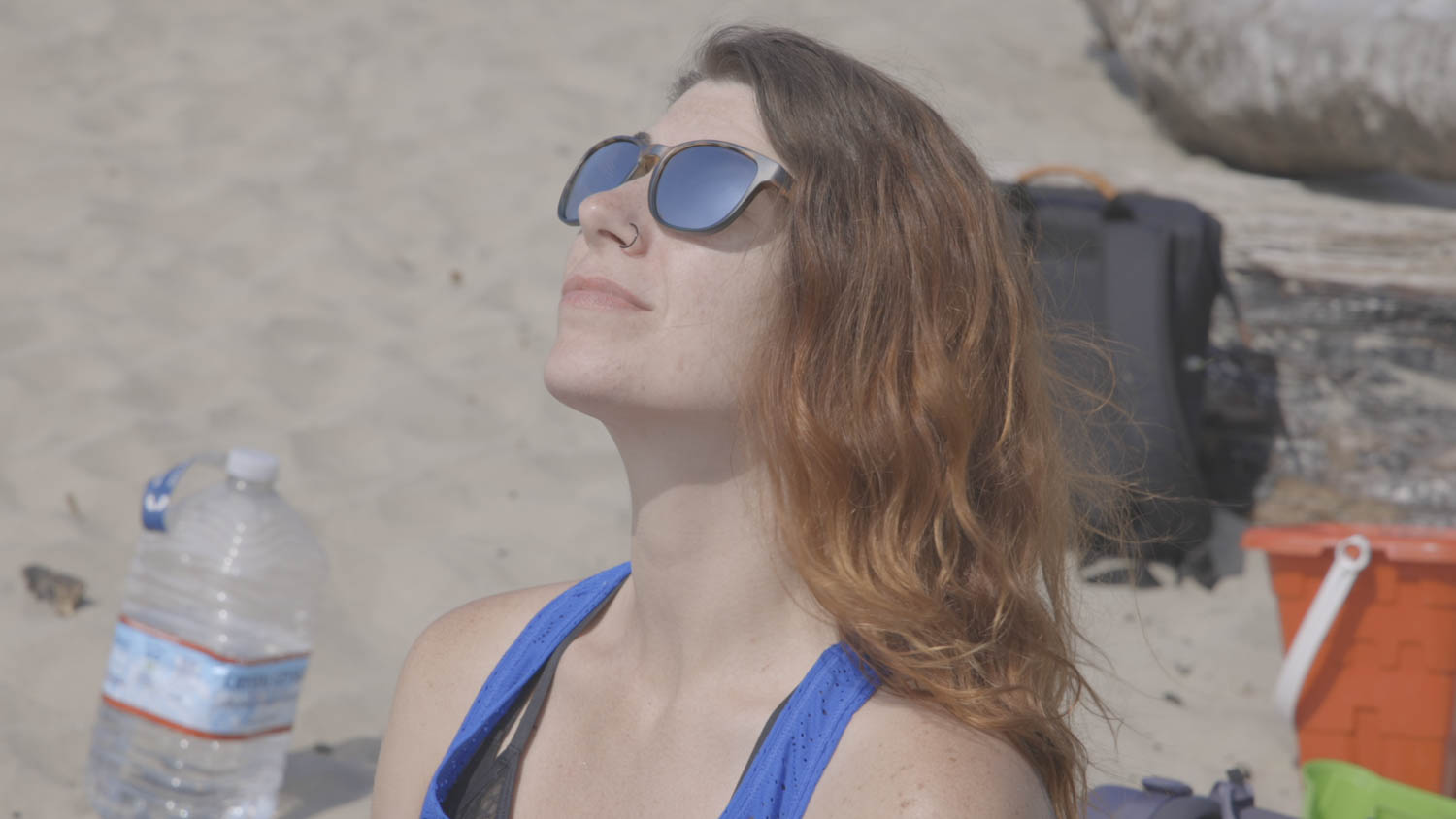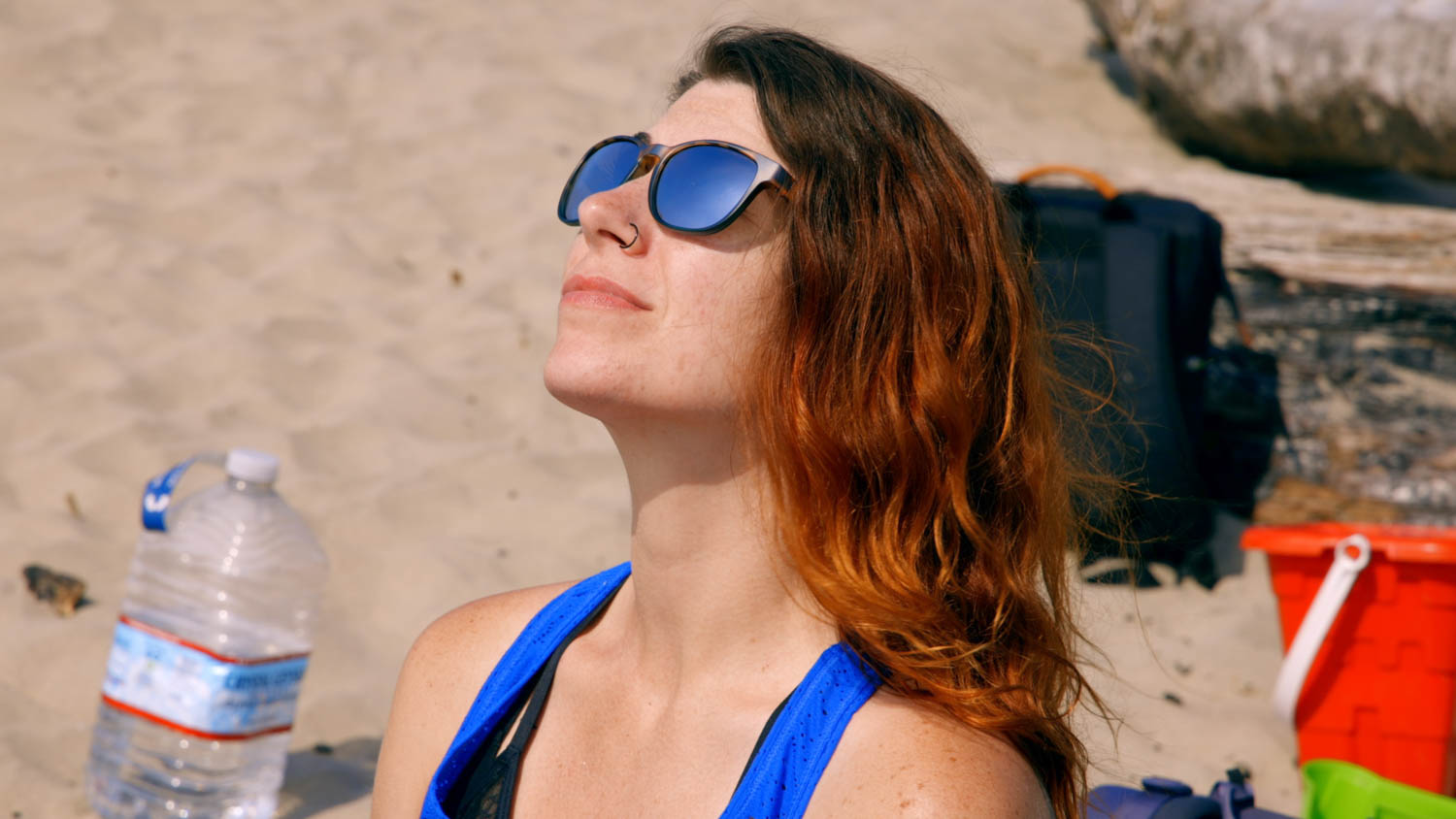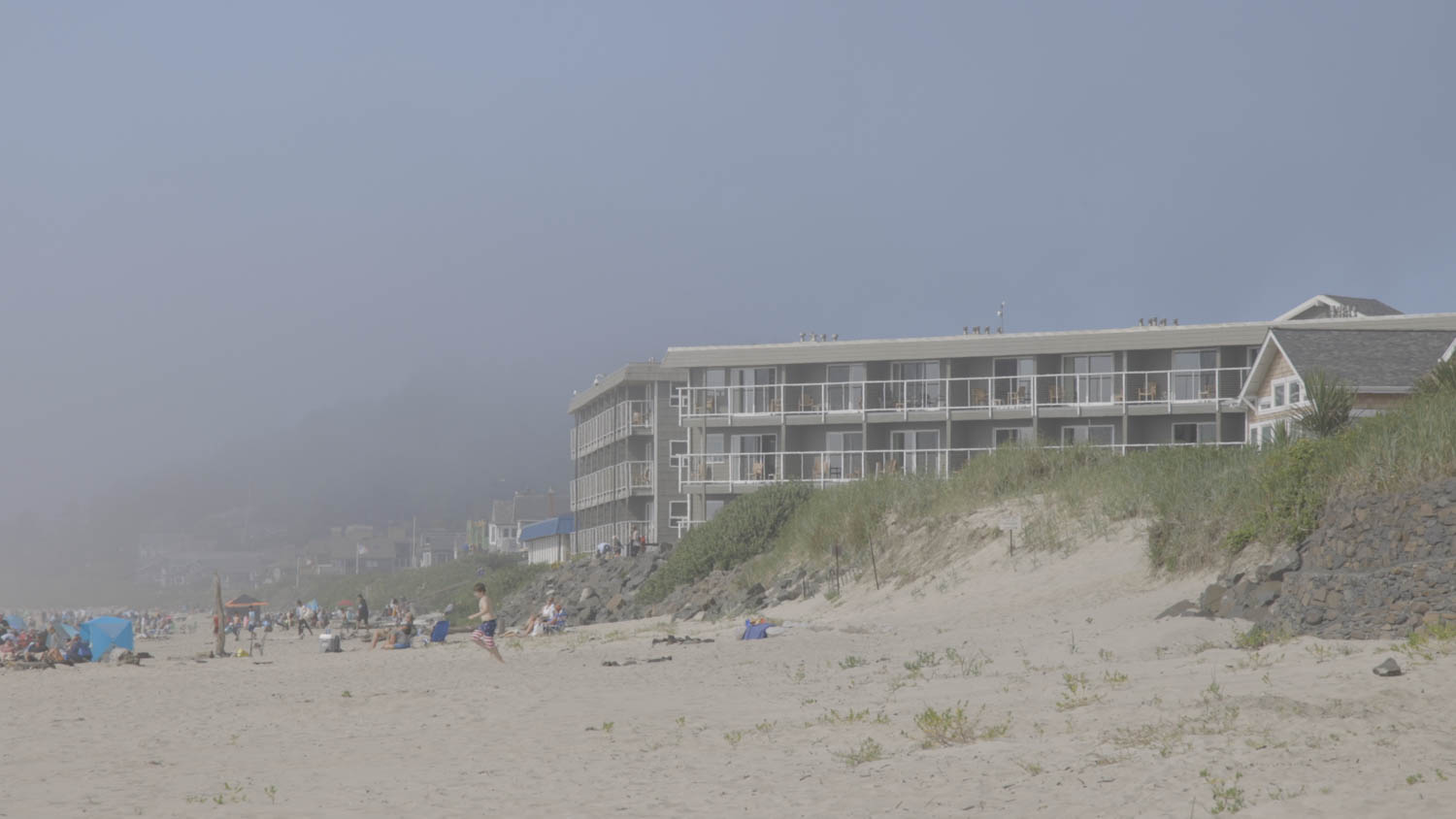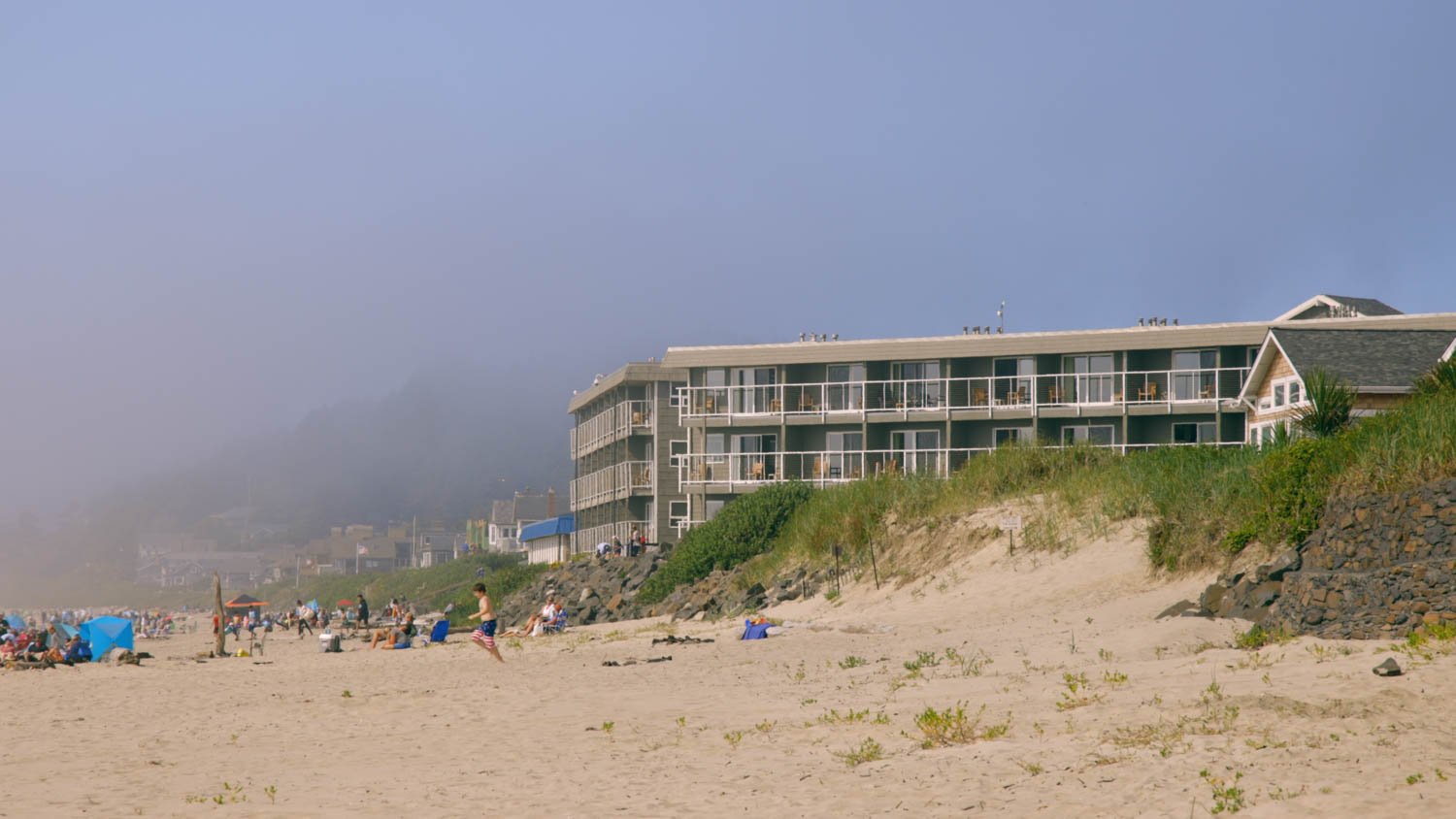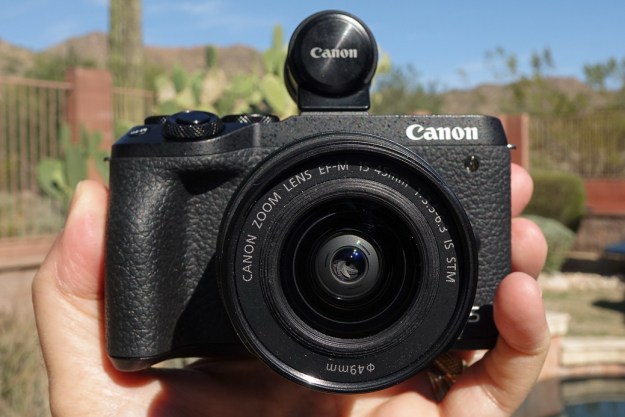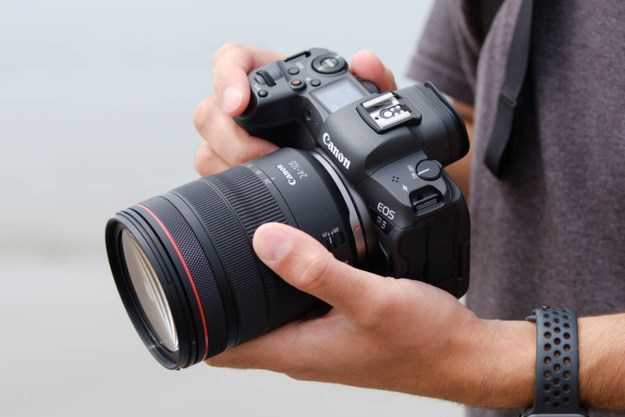
“Canon held nothing back to deliver the full-frame camera its fans craved.”
- Excellent, 45MP photos
- Impressive 4K/8K video modes
- Responsive subject-tracking AF
- Good 5-axis image stabilization
- Excellent build quality
- Control layout could be improved
- Can overheat in video mode
- Risk of banding at high ISO
It isn’t often that we see a new camera with as much promise and hype as the Canon EOS R5. After the relatively modest reception to the original EOS R, the R5 was Canon’s chance to prove it can make a full-frame mirrorless camera that doesn’t just compete, but leads. The spec sheet reads like a gourmet menu, a meal guaranteed to sate the appetite of anyone who can afford it — and at $3,899 for the body, or $4,999 with the RF 24-105mm f/4L lens (tested), that isn’t very many people.
But the EOS R5’s exclusivity isn’t a problem. This is a high-end camera with a high price to match, and while it’s easy to argue that it squarely targets only professional customers, I don’t believe that’s the full story. This is a branding camera; it’s aspirational. It may not care about the enthusiast or amateur in terms of direct sales, but it still serves to answer the question that such customers often ask: “Who makes the best

Even if the EOS R5 is out of your price range, its status as one of the most powerful and capable mirrorless cameras might help draw you to a lower-end Canon (perhaps the EOS R6) instead of going with a competing brand. In that respect, it’s hard not to see the R5 as a total success.
But for the customers who are actually going to buy it, is the Canon EOS R5 worthy of the hype? Everyone in the photo tech sphere — myself included — has been waxing lyrical about this camera long before we had our hands on it. Now that it’s out in the wild, you may want to manage your expectations — if only slightly. While it may not be exactly what we were sold, this is still an excellent camera.
A still camera first
Canon focused its early marketing on the EOS R5’s video chops, detailing the insane 8K RAW and 4K/120p features months before we knew much about its still photo capabilities. This shifted people’s expectations of what the R5 would be, and I can’t help but feel this was the wrong way to hype it.

Like the vast majority of hybrid mirrorless cameras, the R5 puts still photography first. Yes, it happens to have an epic video mode attached to it, but I think still photographers will find more to love than videographers. The R5 is probably the best still camera Canon has ever made, mirrorless or DSLR.
The goal with the R5 was obviously to keep pace with the likes of the Sony A7R IV, Nikon Z 7, and Panasonic Lumix S1R. These are all high-resolution, full-frame mirrorless cameras, and while they each have capable video modes, they clearly target the still photographer.
The R5 is probably the best still camera Canon has ever made, mirrorless or DSLR.
If the R5 had originally been marketed as a still camera, I think the many complaints we’re now hearing about overheating in video mode wouldn’t have been so loud. But because Canon emphasized video so strongly in the lead-up, reviewers are feeling a little underwhelmed that the reality doesn’t match the promise.

I’ll get to my own experience testing the video mode later, but for now, just know that the R5 is a still camera first, and as such, it has similar limitations to other hybrid cameras when it comes to video. You can still use it for many video applications, but start thinking of it as a replacement to your cinema camera and that’s where things are going to go bad.
Design and handling
The R5 will feel at home to anyone coming from a Canon DSLR, and I found it to be slightly more comfortable to hold than a 5D Mark IV — even though it’s only a fraction of a pound lighter. It has a very familiar grip, the same shutter button placement, and most of the controls are exactly where you expect them.
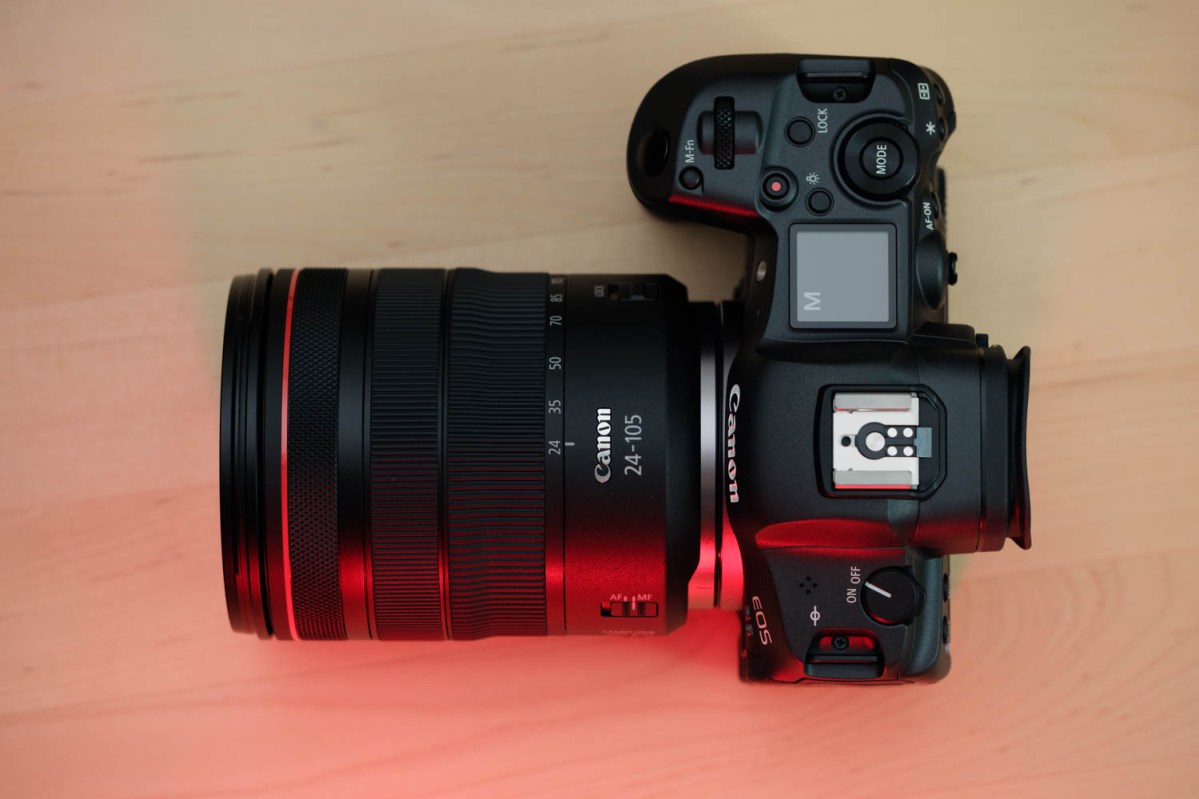
One key change is the move to a three-dial setup, which allows for direct ISO, shutter speed, and aperture control. This is in addition to the multi-function lens ring on RF lenses.
There is also an autofocus joystick, and while this is usually a must-have feature for me, I don’t like the R5’s. Its surface is too sharp, making it uncomfortable, and it doesn’t provide great tactile feedback. It’s also just less needed, given how good the subject-tracking AF is, and the R5’s touchpad AF using the LCD screen works better for single-point focusing, anyway.
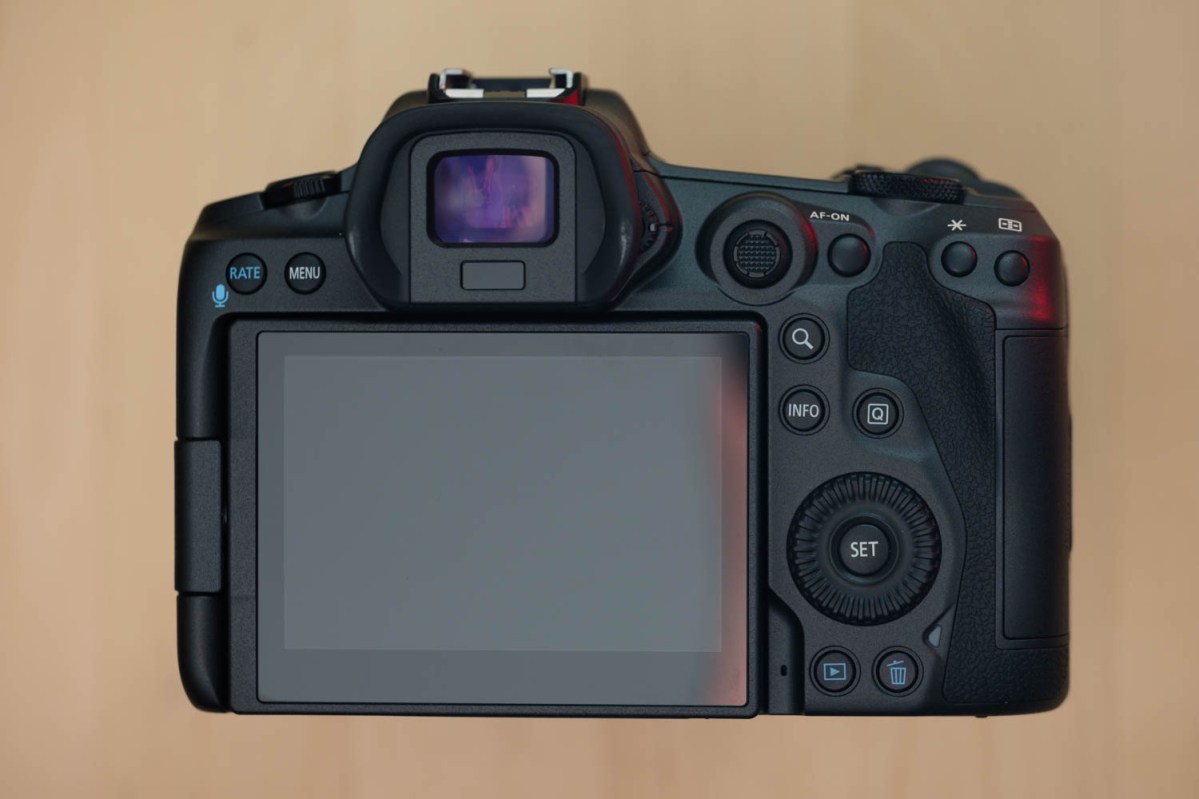
What Canon DSLR shooters will find missing is the AF/Drive button. Accessing autofocus and drive modes is a two-step process that requires bringing up the quick menu. Fortunately, you can program either of these functions to the lens ring or other buttons, but you’ll sacrifice the default functionality of a button by doing so. I set AF mode to the lens ring and drive mode to the depth of field preview button (because who uses that, anyway?), and found this to be a pretty good setup. Still, the R5 is a $3,900 camera body, so for Canon to skimp on direct access control is a bit of a letdown.
Otherwise, there is little to complain about in the design department. The body is weather-sealed and solidly built, if heavy for a
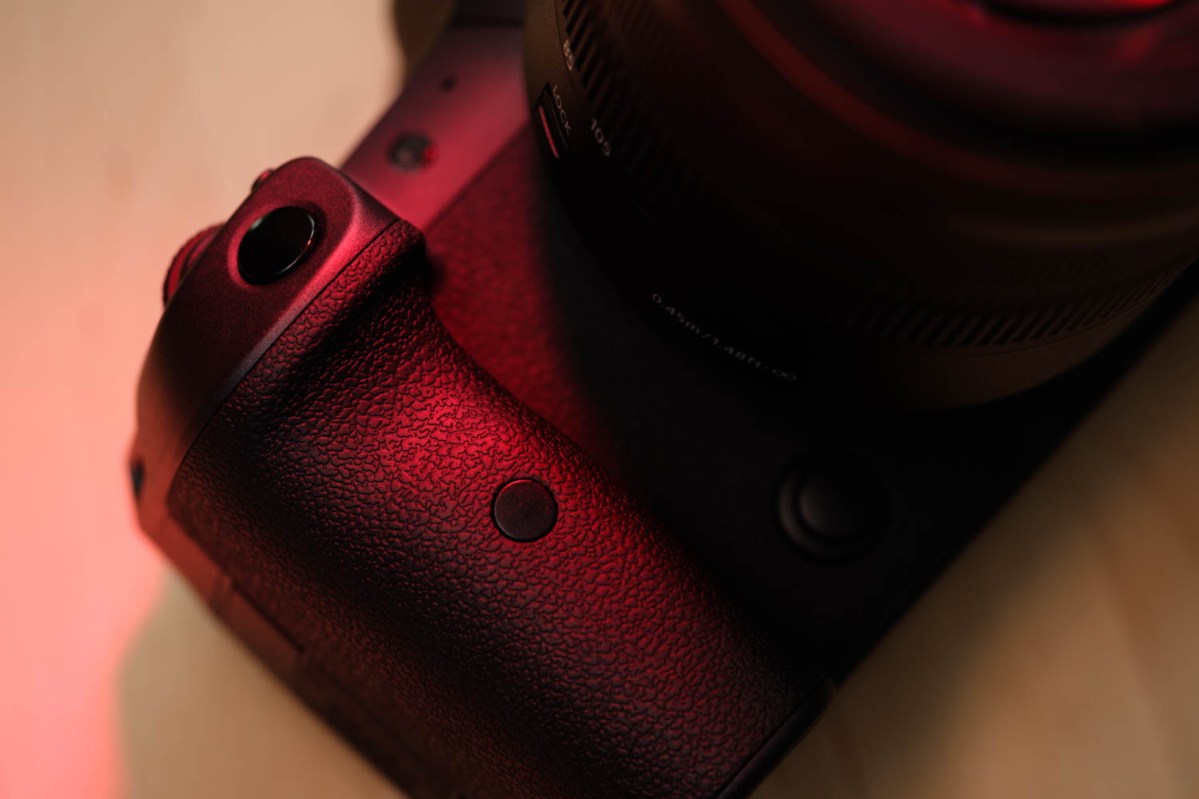
The new electronic viewfinder (EVF) has 5.76 million pixels, the same as the Panasonic S series and Sony A7R IV. It’s a beautiful EVF, although the glass distorts the screen somewhat so that the edges curve outward. It’s not a huge problem, but I definitely found it to be a little distracting at times.
Canon has also finally adopted a modern media format by offering both SD UHS-II and CFexpress Type B card slots, the latter of which is required for 8K video (and some
Photography experience
Aside from the lens mount, the Canon EOS R5 is basically all new compared to the original EOS R. It’s also the first R-series camera that feels like it was built from the ground up with bespoke components, starting with the 45-megapixel full-frame sensor, which, unlike all prior R-series cameras, has not previously been used in a Canon DSLR. Even the battery has been updated, offering greater capacity in the same form factor as the longstanding LP-E6 (although battery life, at a CIPA rating of just 320 exposures, is not a highlight).
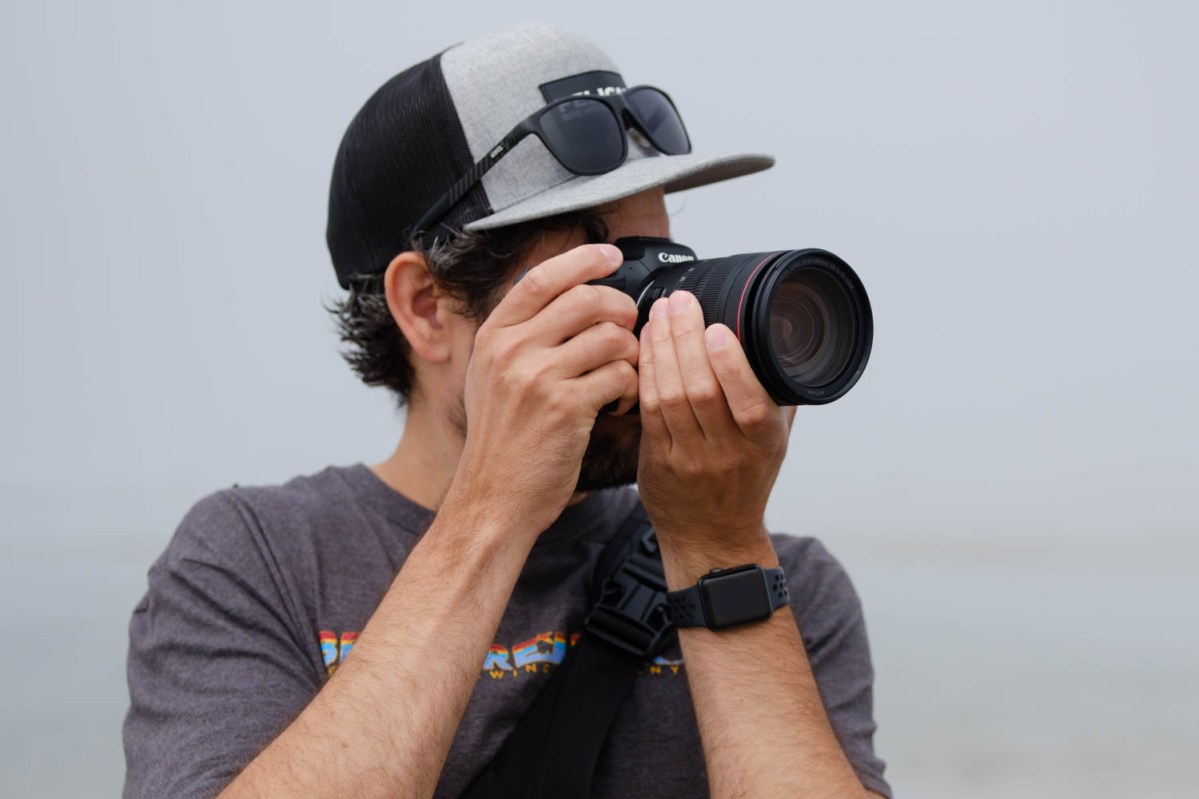
What sells it, however, is the autofocus. The EOS R5 uses Dual Pixel Autofocus II, Canon’s latest on-chip phase-detection technology that puts 1,053 focus points over the entire frame. It incorporates updated face and eye-tracking for both people and animals, and in my experience, it works exceptionally well.
I might go so far as to say Canon’s face tracking is even better than Sony’s — and that’s huge.
In practice, I was blown away with how quickly the R5 would find the subject within the frame as well as how strongly it stayed glued to it. For photographing people, this meant I could concentrate solely on framing without worrying about selecting my focus point. Having recently shot portraits with the Sony A7R IV, I might go so far as to say Canon’s face tracking is even better than Sony’s — and that’s huge.
But what really impressed me was the animal AF. When shooting birds in flight, the focus box instantly jumped to the bird’s head — not just the bird, but actually its head. When photographing a dog, the AF continued to track its body even when its head and shoulders ducked down below a log. A wild rabbit let me creep up within a couple of feet while it was eating, and the R5 had no trouble finding its eye.

If I have anything to complain about, it’s that eye-detection doesn’t kick in until the subject is relatively large within the frame. However, as face-detection alone will naturally be sufficient for subjects farther away, this probably isn’t a big deal. Face-detection itself does seem to work at a greater distance than what I saw in the Canon EOS RP, but there is still some room for improvement here. Fortunately, when the camera lost sight of a face and reverted to standard AF, it usually still found the correct subject — but this will depend on the complexity of the scene and if there are other objects closer to the camera that could confuse it.
There is one other issue with the AF. As I understand it, DPAF focus points are not cross-type, meaning they are sensitive only to lines in one direction. The R5 does not appear to be sensitive to horizontal lines at all, and flat-out refused to focus when I happened to point it at a slatted closet door. Confused, I tried again, but no matter how many times I pressed the shutter button, the R5 would not focus. As soon as I rotated the camera into portrait orientation — meaning the slats were now vertically oriented from the camera’s perspective — it instantly snapped into focus. Other similar subjects — like closed window blinds — yielded the same results.
The lack of cross-type AF points is par for the course in on-chip phase-detection systems (with Olympus being one notable exception), but contrast-detection normally takes over in other cameras when phase-detection is not possible. Running the same test on my personal Fujifilm X-T2, I found that it focused, but only after hunting briefly — in portrait orientation, it focused without hunting. This suggests that, like the EOS R5, the X-T2’s phase-detection struggles to detect horizontal lines, but it can rely on slower contrast detection in such a situation, something the R5 seems unable to do.
I don’t know how big of an issue this might be in the real world — I didn’t have any trouble outside of my office. My overall experience with DPAF on the EOS R5 was very positive. Still, it is a bit concerning that all it took to make AF fail completely was a subject without any vertical lines. I have reached out to Canon for comment and will update this review when I hear back.

The other all-new feature the R5 introduces is 5-axis in-body image stabilization (IBIS). Alongside the EOS R6, this represents Canon’s first attempt at sensor-shift stabilization, a feature that was sorely missing from the EOS R and RP. It works with both stabilized and non-stabilized lenses, and can provide up to 8 stops of shake reduction, according to Canon.
Now, that’s a hard claim to definitively test since “stops” are a relative unit. In my testing, performed with the stabilized RF 24-105mm f/4 lens, I was able to shoot as slow as 1/8 second with pixel-level sharpness about equal to what I achieved at 1/60 second. However, at reduced resolution, I felt comfortable pushing that to a 1/2 second. Different lenses, as well as your technique and steadiness, may yield different results, but I have a hard time believing Canon’s claim of 8 stops.
The thing is, I don’t really care. Just having IBIS is the key here. Being able to handhold a 2-second exposure, as Canon demonstrated, isn’t what most photographers care about. Getting sharp results at more practical shutter speeds is what matters, and that’s what the R5 delivers.
Video experience
The most obvious question about the Canon EOS R5’s video mode is simply: Who is it for? RAW 8K video — which consumes 2,600 megabits per second (that’s 325 megabytes per second) — is far beyond what the average customer needs. But beyond the hype and the never-ending game of one-upmanship, 8K is simply the consequence of demanding both a 45MP sensor and RAW video.
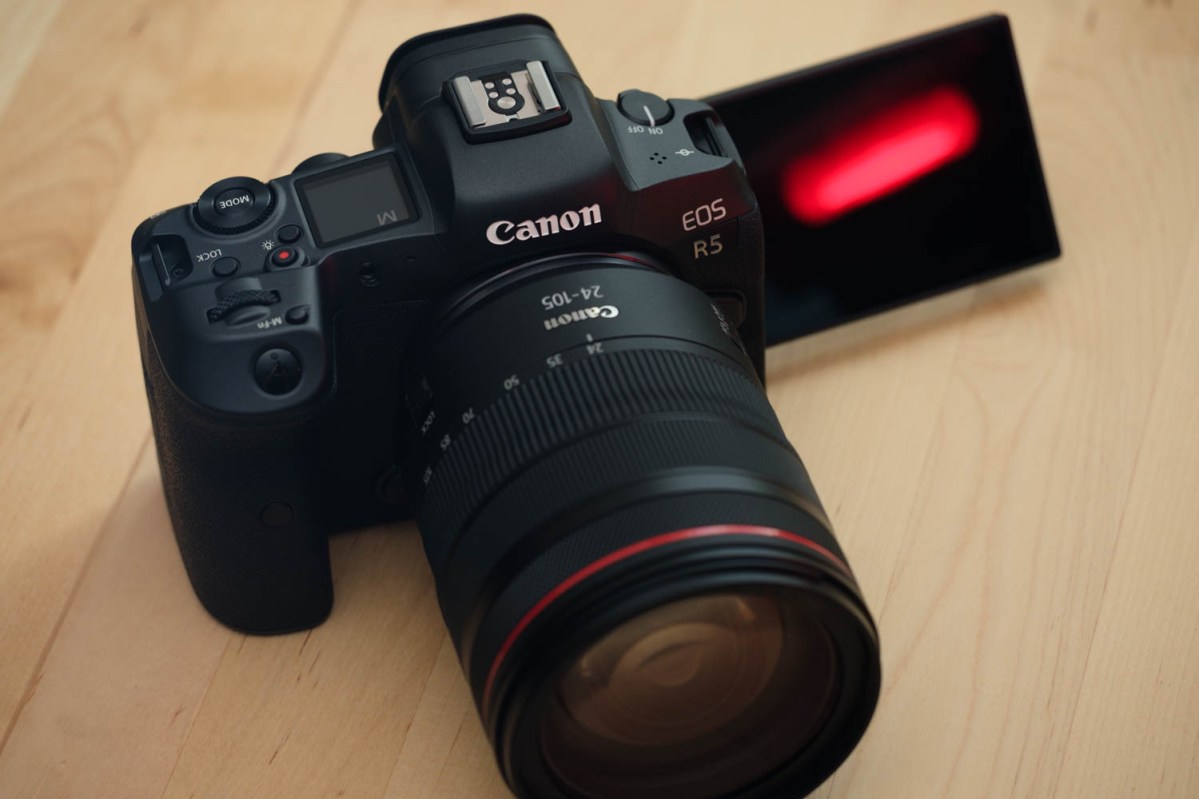
The sensor was required to put the R5 in league with other high-resolution mirrorless cameras, but such a high pixel count poses a problem for video. Typically, for
Then there’s the issue of RAW. By definition, RAW is unprocessed — so the camera either has to output every individual pixel, or it has to do something like cropping or line-skipping, which deactivates pixels and drastically reduces field of view or detail, respectively. Smartly, the R5’s sensor is 8,192 pixels wide, exactly the resolution for DCI 8K (which is a slightly wider-than-usual aspect ratio of 17:9). So with one-to-one pixel output, the R5 can fully utilize its sensor area for RAW 8K video — but can’t do RAW at other resolutions at all. It also means that in Ultra HD (16:9) modes, there is a very slight crop. (Just for reference, Blackmagic Design got around this limitation in its Ursa Mini Pro 12K cinema camera by using a novel sensor design purpose-built for RAW scaling, but other cameras don’t have this luxury.)
We still haven’t answered the question of who needs this feature. I previously wrote that 8K cameras are all but unnecessary, and shooting the R5 hasn’t changed my mind. I don’t own a
So it’s safe to say that 8K, especially in RAW, is something normal people are unlikely to use. Professional filmmakers are the only ones who may want it, and Canon even suggests the R5’s use as a “B” camera working alongside higher-end cinema cameras.
But the R5 is not ready for that kind of production. I can echo the complaints of others around the web when it comes to overheating. You can have all the great quality and features, but a camera that even has a chance of shutting down on set is simply unacceptable in a professional environment.
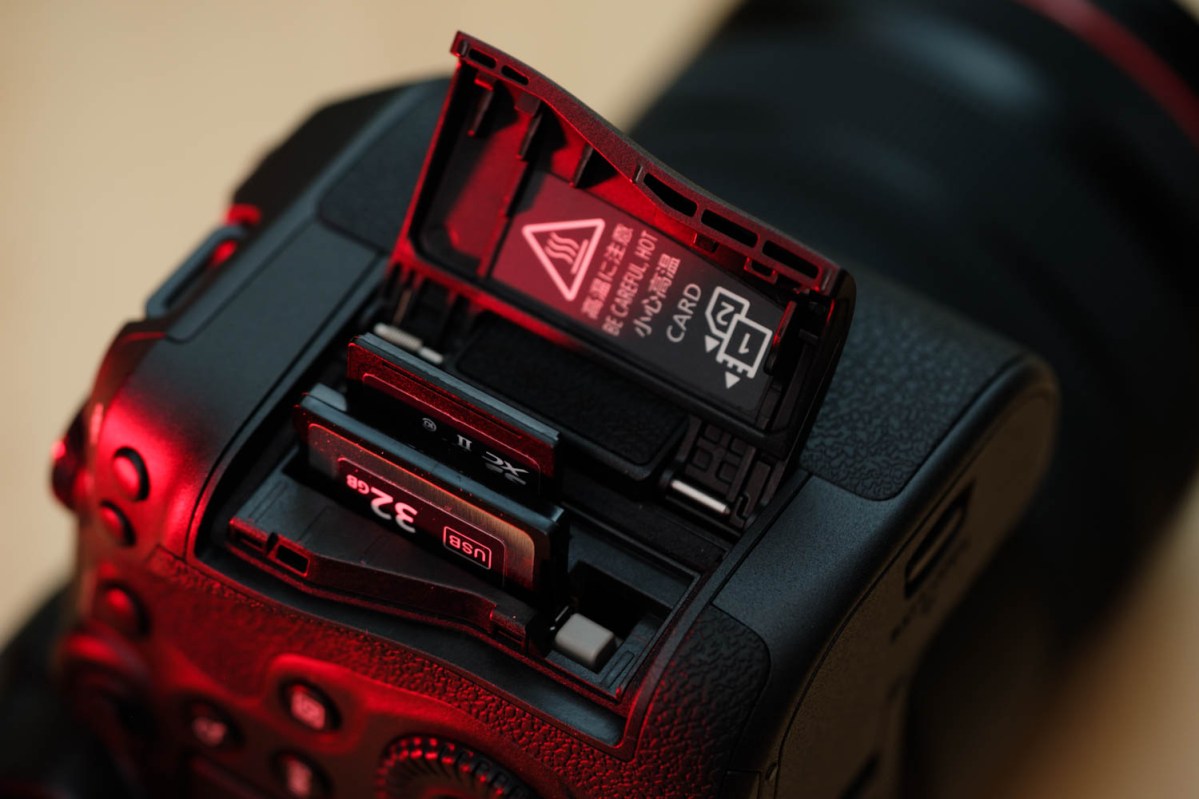
I haven’t even tested the 8K modes yet as I’m still waiting on a CFexpress card, but overheating is already a problem in some
To its credit, Canon has been open about this — at least, since the official announcement. The camera itself also displays how many minutes you can record at the current heat level, a number that slowly ticks up the longer you let the camera cool down.
However, the very good news is that the camera does not appear to be heat limited at
For those of us who shoot every project in
But that shouldn’t completely let Canon off the hook. When they announced an 8K RAW camera, we all expected a camera built for people who could use 8K RAW footage — namely, professional filmmakers. The EOS R5 falls short of those expectations, but I take bigger issue with how the camera was initially marketed to generate those expectations than I do the camera’s failure to live up to them.
Image quality
Canon made a higher-resolution sensor in the past, the 50MP chip in the EOS 5DS series, but the EOS R5’s 45MP chip is a definite improvement, especially as you turn up the ISO. ISO range is an impressive 100-51,200, expandable a stop further to 102,400. While those top few stops are of questionable usability, noise performance is otherwise very good for the class.

But there was one issue: While photographing the night sky, I noticed visible banding artifacts at ISOs above 3,200, which became a major distraction by 12,800. I didn’t notice banding in any other scene, including in my indoor ISO test shots. It seems to only be visible against a dark and uniform background.
As with the DPAF focusing error, I don’t know how often this will affect pictures in real-world use. The astrophotographers I know generally prefer wider apertures and slower shutter speeds to maxing out the ISO, but it’s something to be aware of.
Otherwise, the R5 delivered beautiful results. The RAW files are very flexible, and I even pushed an underexposed ISO 1600 shot by 3 stops without a noticeable increase in noise. It’s hard to say without comparing cameras side-by-side, but this may be Canon’s best sensor to date. I think it was held back slightly by the RF 24-105mm f/4 lens, which just wasn’t quite sharp enough to resolve all those pixels, but I’d love to see what it can do with one of Canon’s excellent RF primes.
I’ve never been a Canon fan, but the EOS R5 has made me a believer.
Video quality is also very good. Again, I haven’t tested 8K or the oversampled
Overall, the EOS R5 is easily Canon’s best hybrid camera from an image quality perspective, and currently, nothing else on the market matches its combination of high-resolution stills and high-quality video.
Our take
I have to admit, I’ve never been a Canon fan, but the EOS R5 has made me a believer. Canon took everything it learned from the original EOS R and implemented it in the R5. The level of improvement is astonishing, even if its highest-quality video modes are of limited practicality.
The high-ISO banding, strange AF behavior on horizontal lines, and overheating issues may be concerns to some, but those issues won’t affect most users in most circumstances. The placement and design of some of the controls rubbed me the wrong way (literally), but I’m sure I would adapt over time, and I definitely appreciate the usability of the three-dial setup.
The cost of entry is high, but for those who can afford it, the EOS R5 provides an incredibly rewarding photographic experience, and firmly establishes Canon as a leader in mirrorless cameras. It may have taken a couple of years to get the recipe right, but Canon has served up a dish worth waiting for.
Is there a better alternative?
Looking at other options, they exist only in the sense that there are much less expensive alternatives, like the Nikon Z 7 at just $2,850 at the time of writing. The R5 has better autofocus, higher-quality video, a higher-resolution EVF, and dual memory card slots — but for a difference of over $1,000, anyone not already firmly seated in camp Canon may want to consider the Z 7.
The Sony A7R IV is the other obvious comparison. At $3,200 at the time of writing, it doesn’t offer the savings of the Z 7, but its autofocus is neck-and-neck with the R5’s and it has an equally high-res EVF, dual SD card slots, and significantly better battery life at a rating of 520 shots. The R5 has the edge in video and continuous shooting speed, though.
How long will it last?
This a professional camera built to hold up to the demands of professional photographers and should last for years. As a flagship model, I wouldn’t expect a full replacement to the R5 for at least 2 years, and its feature set is the most future-proof of any camera on the market.
Should you buy it?
Yes, if you want the best tech currently on display in photography — and you don’t mind paying for it. This is the camera I always knew Canon could build.
Editors' Recommendations
- Smaller and cheaper, the full-frame Lumix S5 is exactly what Panasonic needed
- The Panasonic Lumix S5: Everything we know
- Should you buy the Canon EOS R5 or EOS R6? The new mirrorless options compared
- After years of waiting, Sony A7S III may arrive this summer
- Canon EOS R5 will be a video beast, with 8K RAW, 4K at 120 fps

